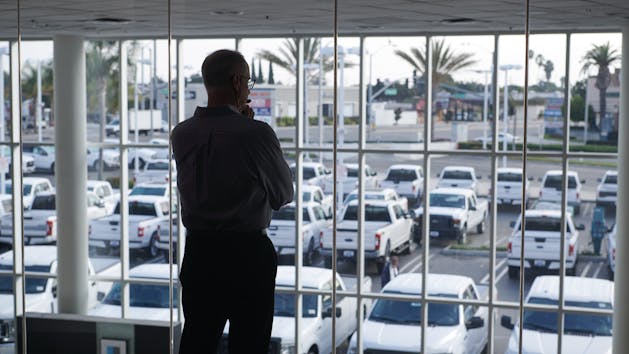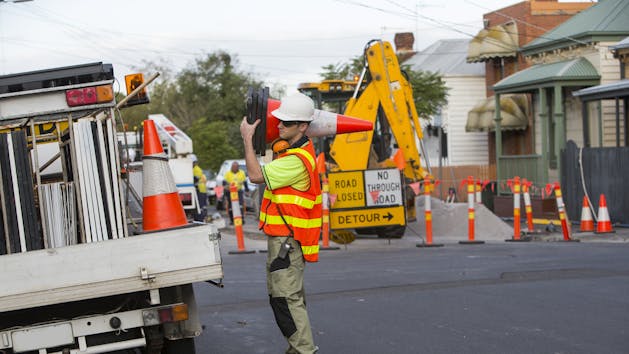Learn the top 3 Ways Telematics Improves Fleet Management for Education by downloading our free ebook.
Smart Solutions for School Bus Fleet Management
With more than 25 million elementary and high school students riding school buses daily, covering about four billion miles annually,1 the school bus system is our nation’s largest public transit system.2 Telematics are the latest innovation helping to make it the safest as well, enabling fleets to help improve student and driver safety while controlling costs.
Facing pressure not only to improve safety but also to run their fleets efficiently (helping them be more “green”) with limited resources, education fleet managers are increasingly embracing telematics technology solutions. In fact, Research and Markets forecasts school bus telematics will reach 98% penetration by 2025.3
Telematics solutions help fleet managers meet these challenges in three vital ways:
Strengthening safety
Safely transporting students requires strict adherence to rigorous safety standards for driver behavior and vehicle operating conditions. Even though students are about 70 times more likely to arrive at school safely on a school bus rather than in a car, accidents still happen.4 Annually, about 17,000 children end up in hospital ERs for treatment of injuries associated with school buses.5
Today’s fleet tracking systems offer one of the best options to help improve efficiency and safe driving behavior. They provide insight and help fleet managers determine effective ways to address potentially unsafe behaviors and enforce safety-related best practices. A safer driving program that incentivizes drivers who exhibit unsafe behaviors the least or who improve the most can help managers motivate their drivers in a tangible way.
Some of the other ways that telematics can play a valuable role in improving student safety include enabling fleet managers to:
- Implement real-time bus tracking
- Keep parents apprised of actual bus arrival time, reducing student wait time outside
- Make sure drivers observe all speed limits, avoid harsh driving such as hard braking and acceleration, and stick to approved travel routes
- Monitoring use of safety equipment, including seat belt use, door opening and closing, mechanical stop-arm operation and parking brake engagement
- Take a data-based approach to driver onboarding, training and coaching
- Determine the safest drop-off and pick-up points for students
- Update routes in real-time, avoiding hazardous weather, heavy traffic and other potential issues
Reducing costs
Many school districts across the country are facing tighter budgets than ever, making it imperative for fleet managers to make the most of every dollar. With the right telematics solution, they can boost efficiency and reduce operational expenses in several ways:
- Reduce fuel consumption by cutting idling time, speeding and inefficient bus routes
- Schedule preventative maintenance on a timely basis to keep buses in prime—and safe—operating condition, and help avoid costly unplanned repairs, downtime and breakdowns
- Help maintain bus performance that can drive up costs with regular maintenance and equipment monitoring
- Reduce wear and tear by routing buses more efficiently and ensuring drivers are properly trained
- Contribute to lower insurance premiums as part of an overall fleet safety program
Fleet management technology can deliver true, measurable bottom-line benefits, including lowering fuel costs, reducing vehicle idle times, cutting total miles driven and increasing vehicle utilization.
Improving accountability
Safety and efficiency aren’t the only concerns in a fleet manager’s wheelhouse. Telematics can also help address other key challenges, such as the need to:
- Meet greener goals. To reduce environmental impact and the fleet’s carbon footprint, telematics can help to optimize routing and track bus usage data such as idling, speeding and fuel usage. Smarter fleet management also helps reduce the concentrated diesel exhaust emissions near schools that have been associated with negative health consequences for young children, including acute eye and throat irritation, exacerbation of asthma and allergies, and interference with lung development. Managers can proudly report on their “greener fleet” metrics to administration, parents, the DOE or OPT (Office of Pupil Transportation), making their school bus fleet more likely to be the vendor of choice.
- Maintain compliance. Automating recordkeeping and data collection helps fleet managers meet all required (and rigorous) safety standards, as well as all applicable state and federal regulations.
- Implement data-driven decision making. Fleet managers need flexibility to quickly adjust routes and schedules in emergencies or when special needs arise. Telematics technology puts valuable data front and center to drive smarter, better, faster decision-making that helps enhance safety, improve vehicle utilization and streamline overall operational management.
It’s time to get smart about telematics
Make sure the telematics solution you choose fits your current fleet needs and is nimble enough to help you adapt to future challenges. Look for solutions that offer these key features:
- Access from virtually anywhere: the ability to view data and maps on any device at any time
- Detailed maps: viewing near-real time activity of all vehicles, officers and equipment
- Easy-to-use dashboards: reporting up-to-the minute fleet analytics
- Coaching modules: helping fleet managers underscore safe driving behaviors
Download our eBook 3 Ways Telematics Improves Fleet Management for Education to learn more about how fleet management systems can help you improve safety for students and drivers, improve your fleet efficiency, keep your TCO low and leverage limited resources.
Sources
1 https://www.epa.gov/cleandiesel/clean-school-bus
2 https://www.stanfordchildrens.org/en/topic/default?id=how-safe-is-the-school-bus-1-1133
4 https://www.nhtsa.gov/road-safety/school-bus-safety
5 https://www.stanfordchildrens.org/en/topic/default?id=how-safe-is-the-school-bus-1-1133
Find out how our platform gives you the visibility you need to get more done.




